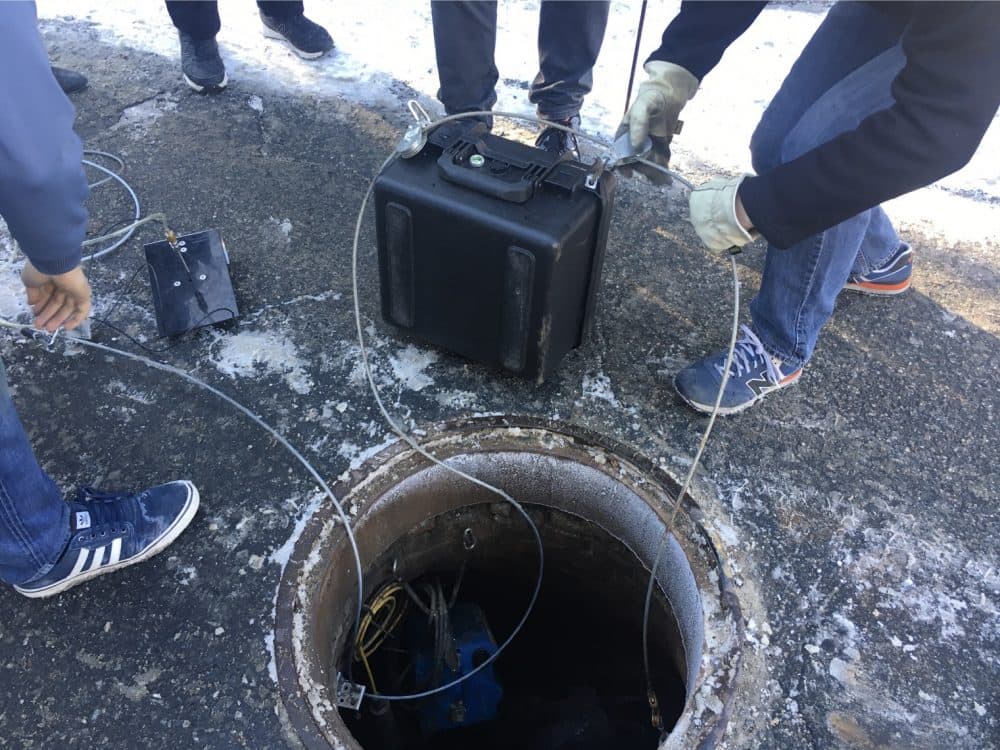Advertisement
Testing Wastewater For Opioids: North Carolina Town Pilots New Technology

A new MIT startup wants to help more cities fight the opioid crisis by screening wastewater to track drug use. One of the first towns to sign up to test the Biobot technology is Cary, North Carolina.
Mike Bajorek, Cary's deputy town manager, says the goal is to foster dialogue about opioid use and get up-to-date information to local public health officials.
"This is a proactive program," Bajorek tells Here & Now's Meghna Chakrabarti. "What we're trying to do is not catch people once they're addicted. What we're trying to do is cut that addiction cycle before people are addicted. And so many more families will be saved and strengthened if we're successful in just starting the conversation."
Interview Highlights
On why Cary is using the new technology
"Last year in Cary — a city of about 162,000 people — we had six fatalities due to overdoses, and an additional 40 overdoses that reversed through the use of Narcan. That was a 70 percent increase over the year before. And while that doesn't seem like a lot in numbers — first off, that was 46 families that were very much affected by it — but as our mayor states all the time, is that while we might not be in crisis, we are in a perfect position to actually try to do something about the opioid epidemic, because of the situation that we're in."
On his initial thoughts when he heard about screening wastewater
"I'll tell you, the first time when I've heard about measuring wastewater for opioid metabolites, I said, 'Well, let's try that,' and we failed miserably. So like any good bureaucrat, I said, 'OK, let's put that off to the side and try something else.' But luckily we have some great staff here with the town of Cary and they continued to talk to people, and got in touch with Biobot Analytics, who, while measuring of wastewater for opioid metabolites is not necessarily new — they're doing a lot of that in Europe, some in Australia — what's different about their thought is, if we take it from small, more distinct geographic areas where we know the demographics of land use, a whole variety of other information, because it's a distinct area, will we be able to give our public health officials a more clear picture of what is going on?"
On if residents have expressed privacy concerns over the screening
"Yeah, and I've had those questions asked of me, and I guess the first thing I always start kinda on the big picture, is in 2016, the CDC has said that over 64,000 fatalities were caused by drug overdoses. And if we have the opportunity to make a difference, why wouldn't we wanna do it? Then a second thing is our smallest areas were about 10,000 people — 10,000 people in a day's time generates about over 500,000 gallons of wastewater, about an Olympic-size pool worth of water over a day. And we'll be sampling about 10 gallons of that Olympic-size pool. So it is thoroughly aggregated, and would not be able to identify any one particular citizen."
On the town's plan in the event the screening reveals opioids are posing a problem in a specific area or areas
"This is not a police investigation tool. Our police have much better ways of understanding and finding where illegal drugs are going on than for us to be spending money measuring wastewater. What we hope to find is to get baselines for different areas, to really do two things: If we get information, or when we get information, that illustrates a higher level of prescription opioid use than in other areas, or if there is illegal drugs going in an area, that is a great point to be able to have conversations, and that's what we're after, to have families talking about what's going on — what's going on in their community, what's going on in their family.
"Now the second piece is by giving this proactive information to our public health officials that currently are developing programs based on reactive data — basically, number of overdose fatalities, stale data, it takes six months to a year to get an autopsy report that identifies what actually was the cause of death. I think through the information we're trying to develop, they'll be getting near real-time information about what is going on, and through predictive analytics and modeling, we hope that somebody's way smarter than me will develop some correlations of saying, 'OK, if you look at this and this, then these actions will occur,' and be able to give that information to our public health officials so that they can develop programs that specifically meet those parameters, they'll be more cost effective and they'll be able to respond quicker because we can remeasure."
This article was originally published on March 28, 2018.
This segment aired on March 28, 2018.